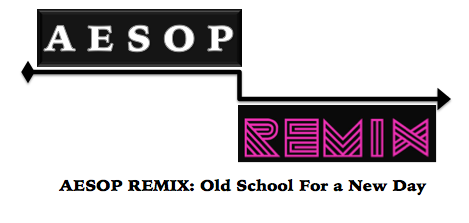Storytelling Contest Statement

STATEMENT ON THE WISDOM OF AESOP

By Caroliese Frink Reed, Ph.D, Chair
Education Committee
Every truth has two sides; it is as well to look at both, before we commit ourselves to either. Aesop
The Education Committee of the National Association of Black Storytellers, Inc is proud to announce the 2015 Storytelling Contest. The theme this year is Aesop Remix: Old School For a New Day. The contest begins Sunday, March 27th and ends Wednesday, June 1st.
There has been much discussion surrounding the birth place and ethnicity of Aesop. In his first volume of Aesop tales, Aesop: Tales of Aethiop the African, Baba Jamal Koram tells us that Aesop came from Cotieum, Phrygia, Asia Minor and that he was a Black Man. In the Oxford World’s Classics version of Aesop’s Fables, Laura Gibbs describes him as a man with “a big fat belly and a big fat head”. She continues her description of Aesop to say that he was “dark-skinned, dwarfish, flat-footed” and “fat-lipped”. This is consistent with a European description of a non-European of Nubian or African origin.
Scholars believe that Aesop was captured and sold to a merchant on the Greek island of Samos. His stories were widely known and respected for their wisdom. Greek scholars and playwrights, such as Socrates, Herodoutus, Aristotle and Aristophanes quoted him and his fables became both a written and oral tradition.
Many tales from the Aesopic tradition include animals such as elephants, camels, lions, crocodiles, jackals, monkeys, apes, scorpions and scarabs; all animals found in Egypt or Nubia, but not in Greece. But as our enslaved ancestors did when brought to America, Aesop included animals that he saw in his new home such as crows, frogs, horses, dogs, bees, ants, rabbits and sheep.
Richard Lobban, in his article “Was Aesop a Nubian Kummaji (Folkteller)?” suggests that because Aesop’s tales parallel themes and styles in Nubian folklore, he may have come from the tradition of the “kummaji”, a folk teller in Nubian society.
However, no matter the exact origins of his birth, the exact details of his life, we know that the Aesopic tradition of storytelling is an African tradition of storytelling. Therefore, continuing in that honored and sacred tradition, we invite you to read, study and review the fables of Aesop and to create a story that is original. It may include modern technology or modern sensibilities or reflect issues of social justice. It could be an animal tale, or it could include animal and human characters and places and spaces you are familiar with, e.g. the Detroit River, the Brooklyn Bridge, Lexington Market, Reading Terminal, Morehouse College, a storytelling conference or the White House. It can be told, sung or rapped (no profanity, please).
Remember, fables are distinguished from other stories by the inclusion of a moral or lesson to the story. The moral can be stated after the story (an epimythium) or before the story (a promythium). The content of the story should clearly reflect your stated moral or lesson.
Please refer to Storytelling Contest Rules and our latest Blog by Sister Ramona King on the National Association of Black Storytellers, Inc website for further clarification or contact Dr. Caroliese Frink Reed at [email protected].
Have fun. We look forward to hearing your fantastic stories (Good Jaliya)!
Caroliese Frink Reed, PhD.
Chairperson
Education Committee
WORKS CITED
Koram, J. (1989). Aesop: Tales of Aethiop the African. Silver Spring, Maryland: Sea Island Information Group.
Gibbs, L. (Tr.) (2008). Aesop’s Fables (Oxford World’s Classics). New York: Oxford University Press.
Lobban, R. (2002). “Was Aesop a Nubian Kummaji (Folkteller)?” Northeast African Studies, 9:1, pp. 11-31.
|